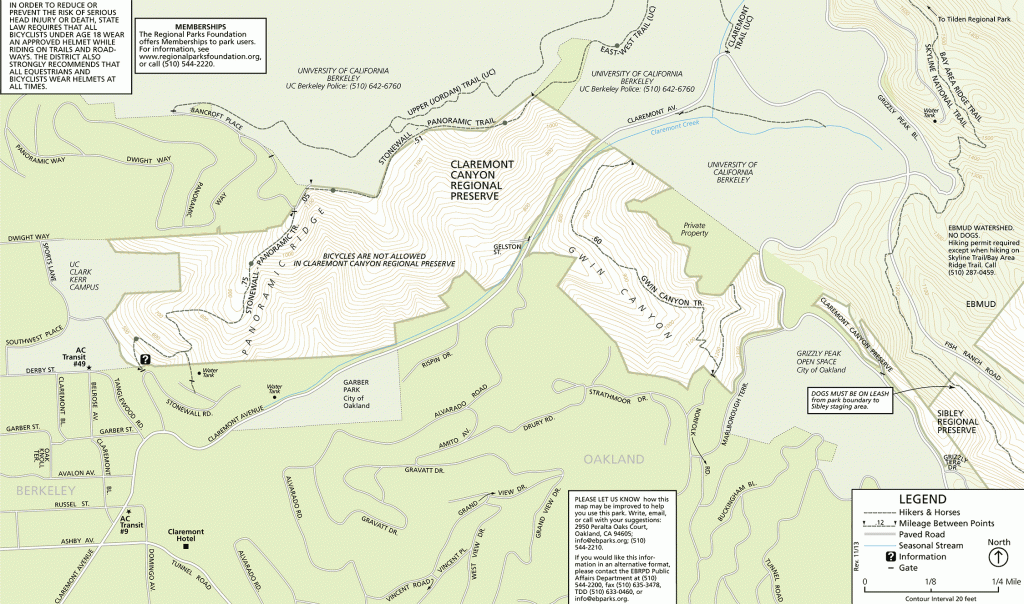Claremont Canyon: Birding Hotspot
By Erica Rutherford
It started as an exercise routine. In the spring of 2009, my partner John Colbert and I began a daily brisk climb up the Claremont Canyon trail starting at Stonewall Road and ending at Panoramic Way, a 750-foot elevation gain in a distance of roughly 3/4 mile. Once at the top, we enjoyed the views and exploring various connecting trails at a more leisurely pace.
One day on reaching the top of the hill, John excitedly pointed out a singing California Thrasher perched atop a pine tree not 15 feet away. Although I’d never seen or heard of this bird before, its warbled song would over time become a frequent and familiar accompaniment on our hikes.
In the fall of that same year, we enrolled in Denise Wight’s Birding by Ear class offered by the Golden Gate Bird Alliance. Her teachings and those of other instructors have forever changed and enriched our outdoor experiences. I did not realize then that we would come to know the year-round residents of Claremont Canyon so well and happily anticipate its seasonal inhabitants and stopovers.


Historical and Geographic Context
Claremont Canyon Regional Preserve came into being as a result of community activism in the 1970s that advocated for preservation of the Claremont watershed. The East Bay Regional Park District acquired the first 80 acres just east of U.C.’s Clark Kerr Campus in 1978, and later supplemented this acreage with acquisitions from individual landowners. The purchase of a 64-acre parcel including most of Gwin Canyon completed the preserve.
In earlier days, Claremont Canyon served as both a mail route for the Pony Express and a corridor for transcontinental telegraph lines, as well as a transportation route for horse and wagon travel between Oakland and Contra Costa County. At present, Claremont Canyon Regional Preserve is best known for its hiking/running trails and spectacular views of Oakland, Berkeley, San Francisco, the bay, and even the Farallones.
The first known inhabitants of the region were the Huchiun Ohlone Indians. The Huchiun inhabited the East Bay from Oakland to Richmond. They traveled between villages living off the land and used the canyon as a thoroughfare to valleys east in Contra Costa County.
Situated behind the Claremont Hotel, Claremont Canyon Regional Preserve is part of a larger 500-acre watershed for Claremont Creek. Its 208 acres span both sides of Claremont Avenue, with Panoramic Ridge rising to the north and Gwin Canyon extending south. Claremont is one of the largest undeveloped canyons on the western side of the East Bay hills.
The preserve supports varied habitat types including coastal scrub, oak/bay woodland, eucalyptus plantations, and coniferous forest. It is bounded on the west by the Clark Kerr Campus. Adjoining undeveloped portions in the upper canyon, including Strawberry Canyon, are managed by the University of California and East Bay Municipal Utility District. The main trailhead is on Stonewall Road, a block north of the Claremont Hotel.
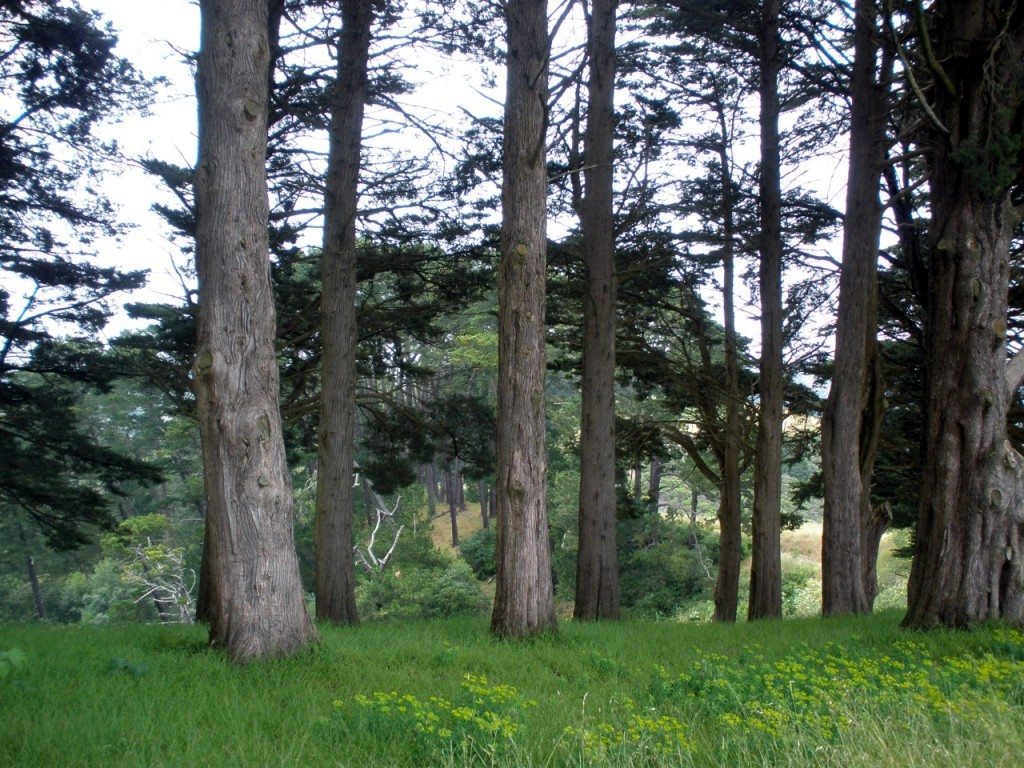
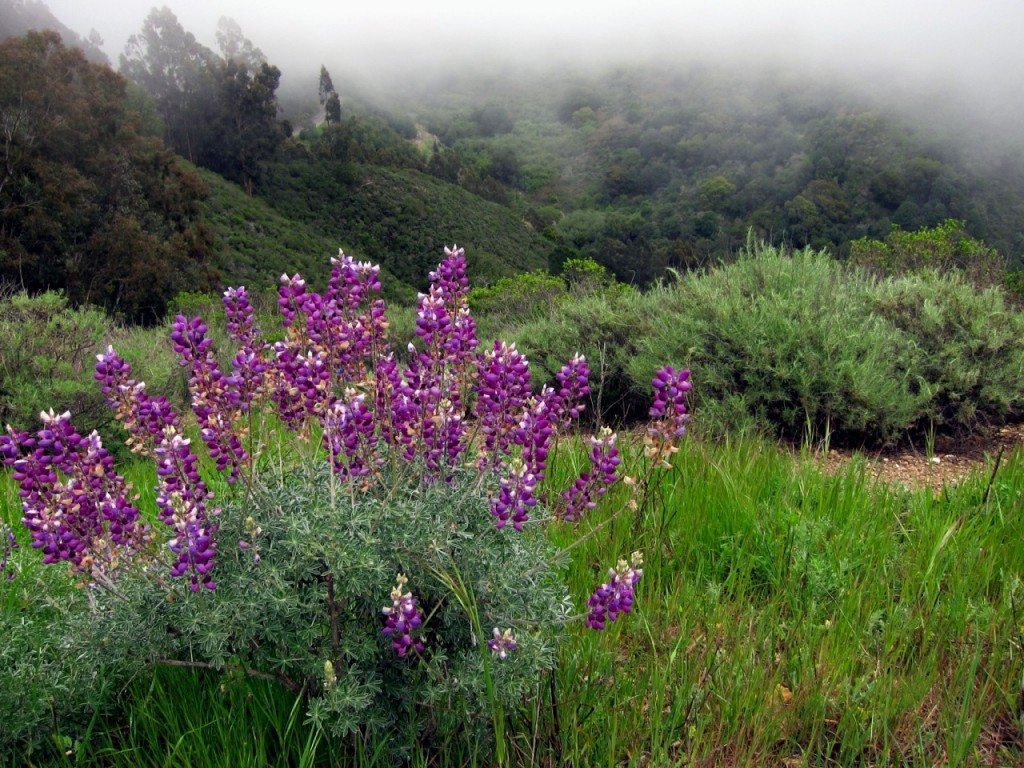
Visitors wishing to take in the incomparable vistas without the steep climb may opt to arrive by car via Panoramic Way behind Memorial Stadium.
Birds and Other Wildlife
The canyon’s diverse habitats attract an abundance of wildlife. Brush rabbits, eastern fox squirrels, and pocket gophers are familiar sightings, while glimpses of coyotes and gray or red foxes are less commonplace. Reptiles include Northern Pacific rattlesnake, garter snake, California alligator lizard, and fence lizard.
But it is the charm of observing the daily goings-on of the resident birds and the thrill of spotting migrants that captures our attention and brings us back each day. Our patch bird list now exceeds 85 species across the seasons. The list grows as our observation skills sharpen and our ears tease out the unfamiliar from the recognizable sounds.
I delight each spring to hear the first juvenile Dark-eyed Juncos buzzing in the dry grasses, foretelling that soon the fields and footpaths will be littered with young and busy parents alike. We spy Pygmy Nuthatches and Chestnut-backed Chickadees as they investigate cavities for nest sites, and watch in silent awe as a Brown Creeper slips under loose bark or an Orange-crowned Warbler disappears into a grassy ground nest to feed its young.
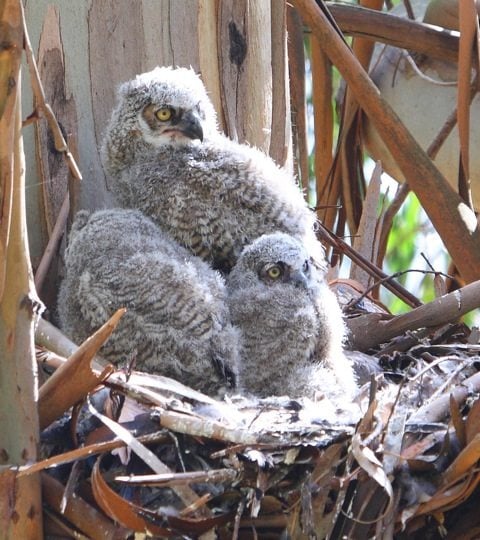
Fall and winter bring different enchantments. The sad-sounding song of the Golden-crowned Sparrow, the almost impossibly high-pitched sound of Cedar Waxwings and Golden-crowned Kinglets, and the muffled tapping of the Red-breasted Sapsucker are among them. The jittery Morse-code chatter of the newly arrived Ruby-crowned Kinglet transforms into an ebullient song just before it departs for points north to breed.
Discoveries
Close observation brings rewards. This past summer, for example, we discovered an adult and pair of juvenile Chipping Sparrows. In May, John recorded a Yellow-breasted Chat chattering but hidden in the brush. In June of 2010, we found a male Indigo Bunting perched up high and singing along the top of the ridge. In September of that same year, I found our first Rufous-crowned Sparrows, which were seen into November but were a no-show for the Christmas Bird Count and haven’t been seen or heard since.
Birders Welcome
Claremont Canyon is something of an undiscovered birding spot. We rarely cross paths with birders there, but curious individuals pause now and again to ask what we’re looking at. To our surprise, more than a few are knowledgeable about birds. If you’re looking for a different birding location, or perhaps a combination hiking/birding experience with unparalleled views, consider making your way to Claremont Canyon. And be sure to say “hi” to us. We’re the couple with binoculars.
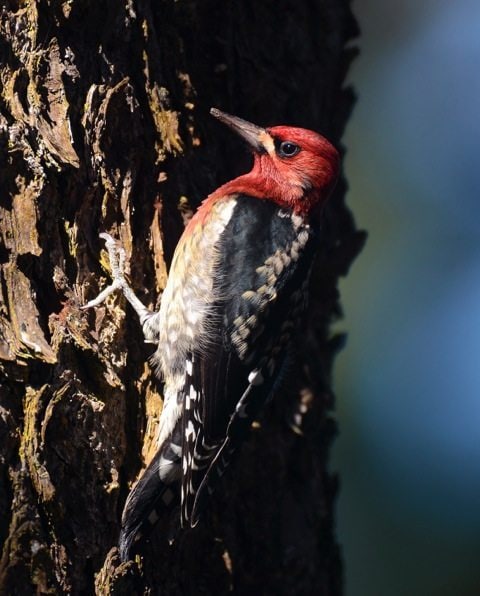
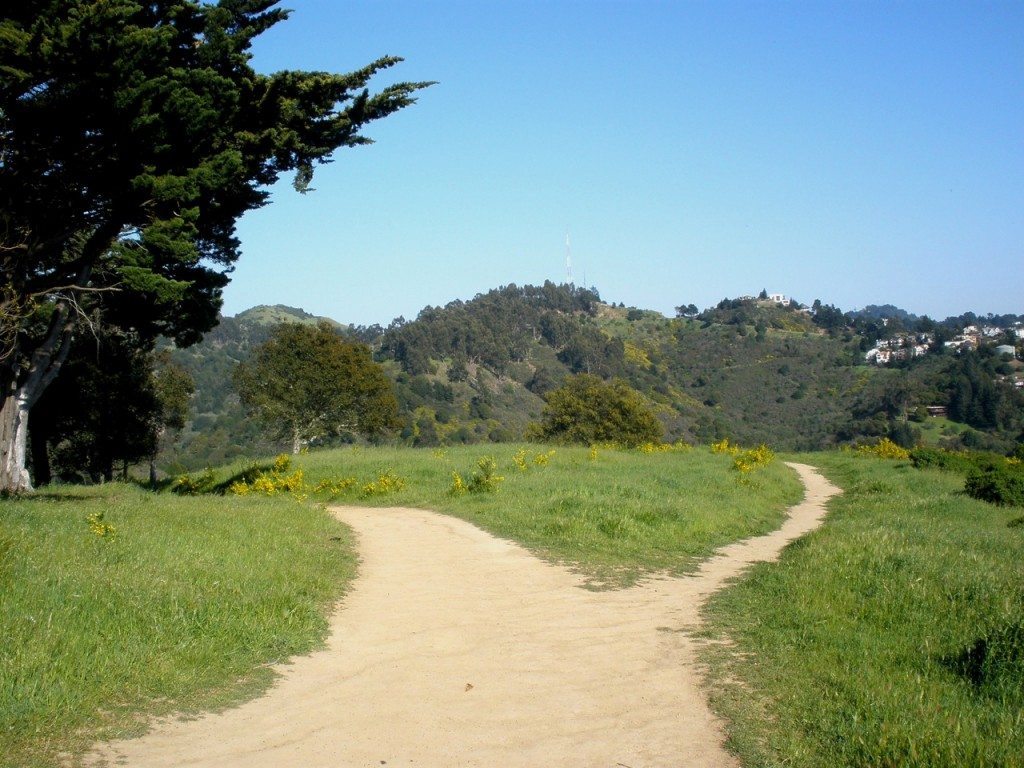
————————————–
Fast Facts
Location: Nestled in the Berkeley and Oakland hills behind the Claremont Hotel.
Hours/Fees: 5 a.m. to 10 p.m. / no fees
Habitat: Part of a 500-acre watershed that supports varied habitat types including coastal scrub, oak/bay woodland, eucalyptus plantations, and coniferous forest.
Key Birds:
Year-Round:
California Quail, Turkey Vulture, Sharp-shinned Hawk, Cooper’s Hawk, Red-shouldered Hawk, Red-tailed Hawk, Rock Pigeon, Band-tailed Pigeon, Mourning Dove, Great Horned Owl, Anna’s Hummingbird, Nuttall’s Woodpecker, Downy Woodpecker, Hairy Woodpecker, Northern Flicker, Black Phoebe, Hutton’s Vireo, Steller’s Jay, Western Scrub Jay, American Crow, Common Raven, Chestnut-backed Chickadee, Oak Titmouse, Bushtit, Red-breasted Nuthatch, Pygmy Nuthatch, Brown Creeper, Bewick’s Wren, House Wren, Pacific Wren, American Robin, Wrentit, California Thrasher, Spotted Towhee, California Towhee, Song Sparrow, Dark-eyed Junco, Purple Finch, House Finch, Lesser Goldfinch
Summer:
Allen’s Hummingbird, Olive-sided Flycatcher, Pacific-slope Flycatcher, Warbling Vireo, Violet-green swallow, Northern Rough-winged, Blue-gray Gnatcatcher, Swainson’s Thrush, Orange-crowned Warbler, Yellow Warbler, Black-throated Gray Warbler, Hermit Warbler, MacGillivray’s Warbler, Wilson’s Warbler, Western Tanager, Chipping Sparrow, Lincoln’s Sparrow, Black-headed Grosbeak, Lazuli Bunting, Hooded Oriole
Winter:
Common Poorwill, Red-breasted Sapsucker, Western Bluebird, Hermit Thrush, Varied Thrush, Cedar Waxwing, Yellow-rumped Warbler, Townsend’s Warbler, Fox Sparrow, White-throated Sparrow, White-crowned Sparrow, Golden-crowned Sparrow
Ease of Access: Steep and rocky in places, no wheelchair access
Getting There: From eastbound Highway 24, take the Claremont Ave. exit and turn left. Continue on Claremont about 0.2 miles past the intersection with Ashby Ave. Turn left onto Stonewall Rd. The main entrance to the preserve is on Stonewall, which is a block north of the Claremont Hotel. An alternative access is from the top of Panoramic Way. Street parking at both access points is limited.
Nearby Services: None
Nearby cafes/restaurants: Rick & Ann’s Café, Peet’s Coffee, Fournée Bakery, all on Domingo Ave.
For more information: http://www.ebparks.org/parks/claremont_canyon
—————————–
A birder since 2009, Erica Rutherford is now preoccupied with birds and conservation in general. She believes that the plight of migratory birds worldwide would be markedly improved if every birder drank only truly certified bird-friendly shade grown coffee.
